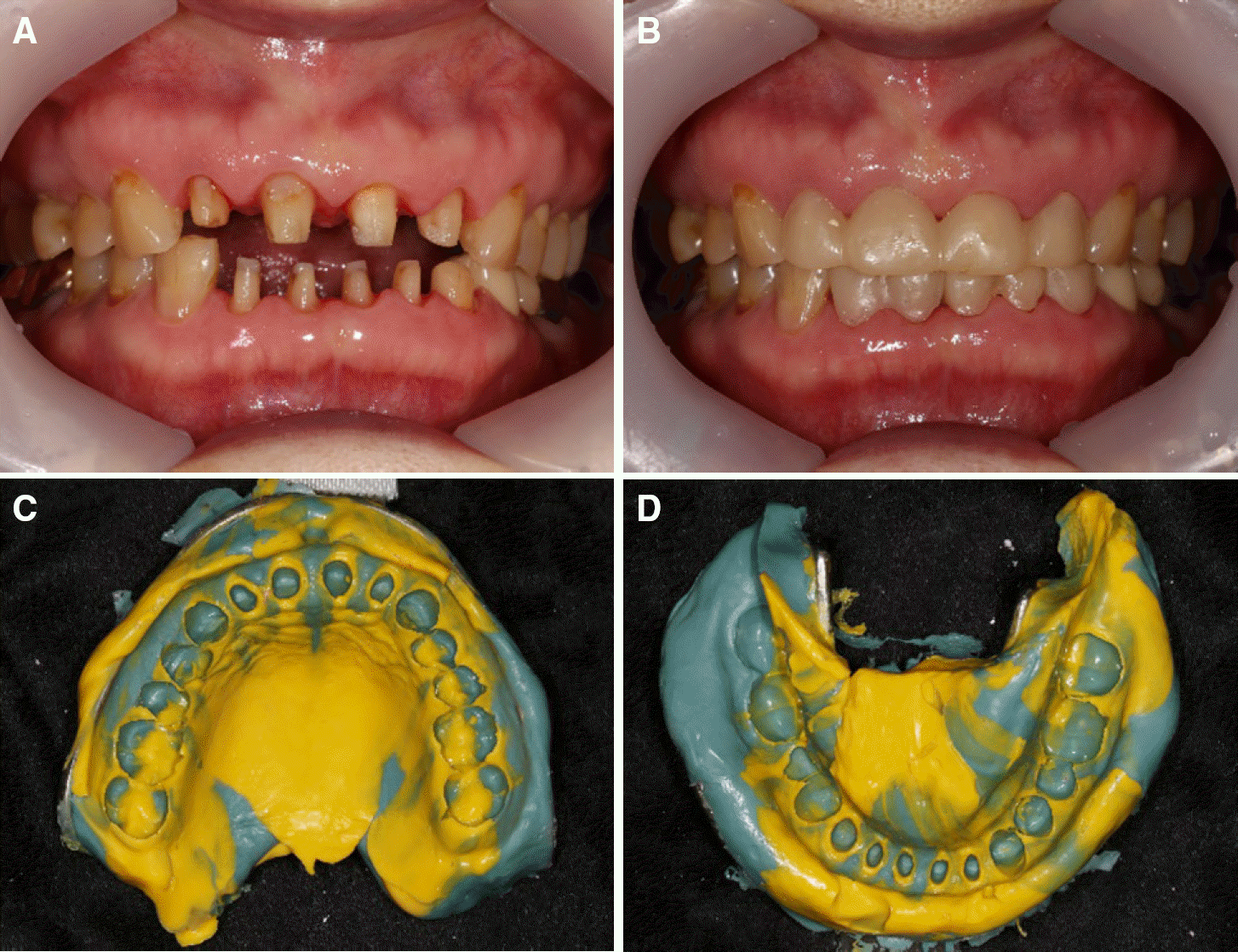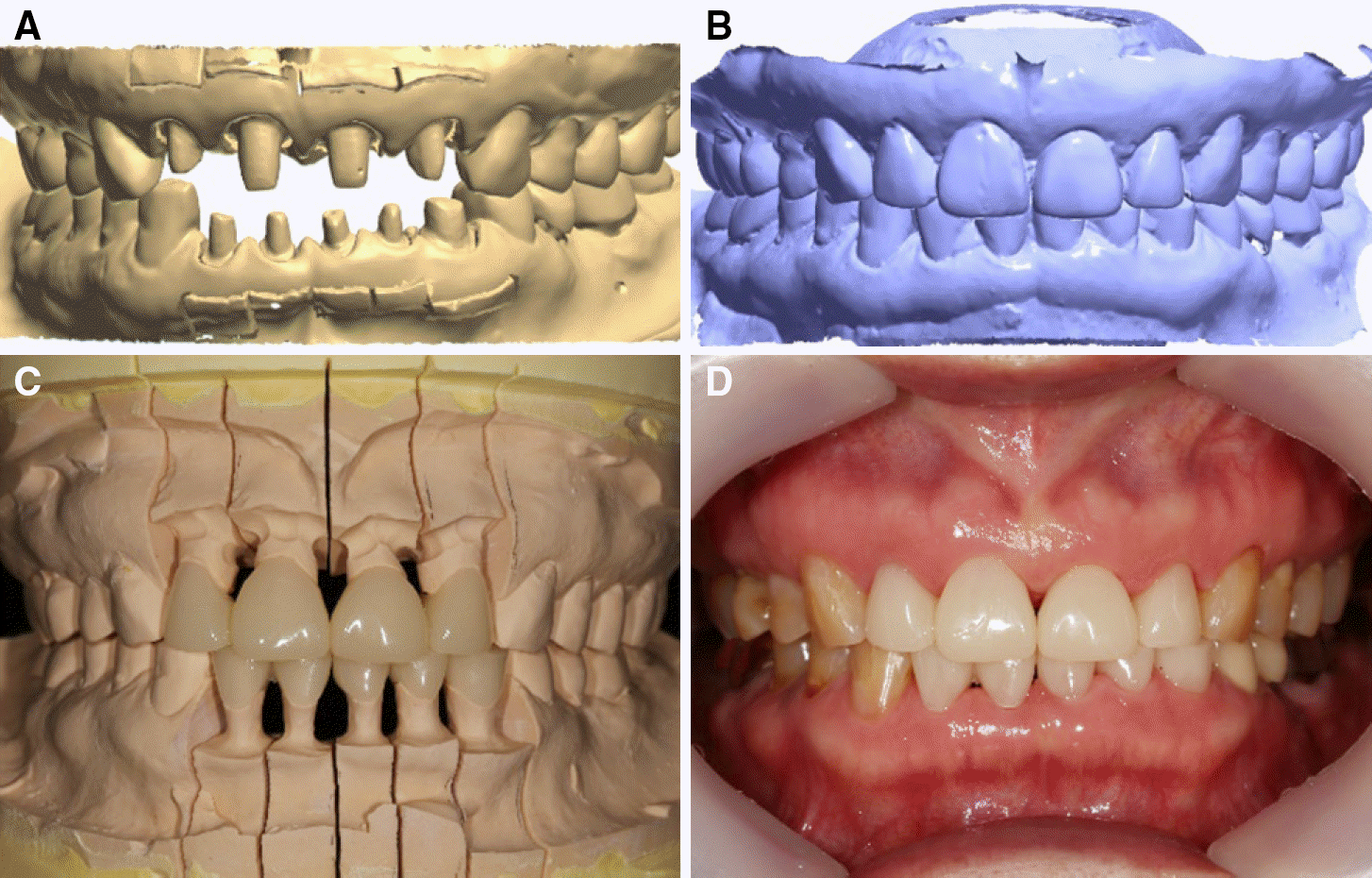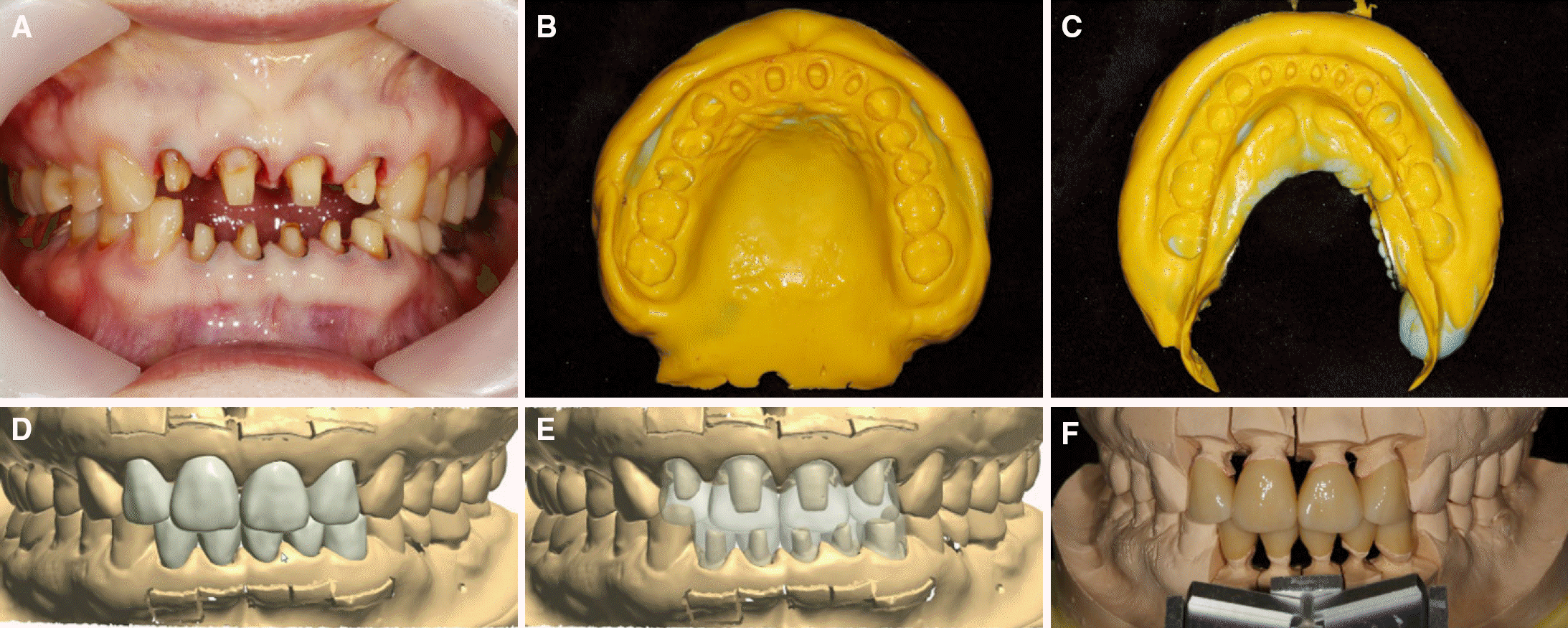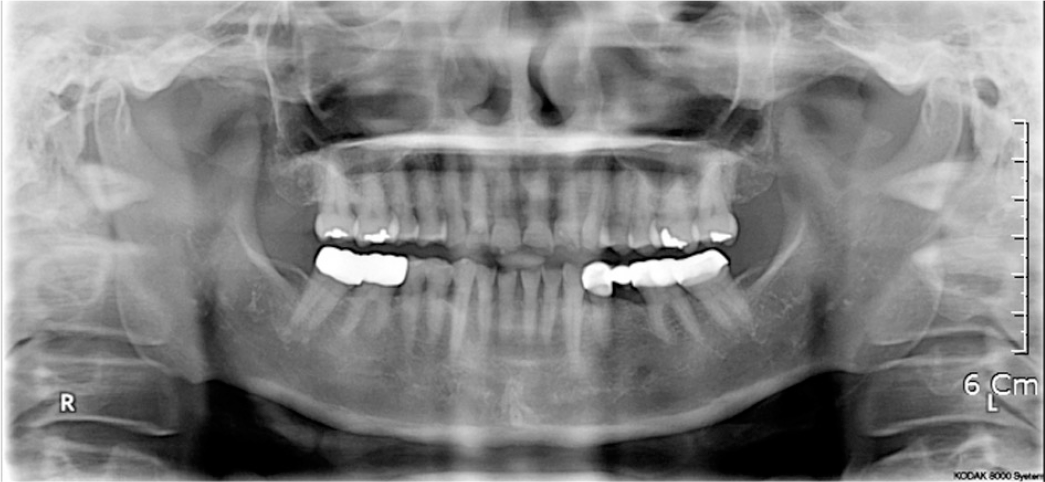Abstract
Patients with Sjögren's syndrome usually suffer from teeth discoloration and attrition due to xerostomia. If the anterior teeth are badly worn, problems such as loss of anterior guidance, occlusal disharmony, and limited space for restoration may occur. However, ideal occlusion is obtained in both centric and eccentric relation by regaining the dis-occlusion of the posterior teeth through the anterior and lateral guidance using twin-stage method. In this case, rehabilitation was performed for a Sjögren's syndrome patient with maxillary and mandibular incisor's severe attrition and teeth discoloration by using twin-stage method. (J Korean Acad Prosthodont 2016;54:291-7)
Go to : 
REFERENCES
1.Fox RI., Robinson CA., Curd JG., Kozin F., Howell FV. Sjögren's syndrome. Proposed criteria for classification. Arthritis Rheum. 1986. 29:577–85.

2.Hobo S. Twin-tables technique for occlusal rehabilitation: Part I-Mechanism of anterior guidance. J Prosthet Dent. 1991. 66:299–303.

3.Hobo S. Twin-tables technique for occlusal rehabilitation: Part II-Clinical procedures. J Prosthet Dent. 1991. 66:471–7.

4.Hobo S., Takayama H. Twin-stage procedure. Part 1: A new method to reproduce precise eccentric occlusal relations. Int J Periodontics Restorative Dent. 1997. 17:112–23.
5.Dawson PE. Functional occlusion: From TMJ to smile design. St. Louis: Mosby;2007. p. 159–77.
6.Williamson EH., Lundquist DO. Anterior guidance: its effect on electromyographic activity of the temporal and masseter muscles. J Prosthet Dent. 1983. 49:816–23.

Go to : 
 | Fig. 2.Initial intraoral photographs. Anterior teeth with discoloration and attrition. (A) Frontal view, (B) Maxillary occlusal view, (C) Mandibular occlusal view. |
 | Fig. 3.Twin-stage method on working cast. (A) Working model with separate die mounted on the Twin-Hoby articulator, (B) Maxillary working model, (C) Mandibular working model. |
 | Fig. 4.Articulator adjustment values for mutually protected articulation of condition 1. (A) Working model with die separated, (B) Lateral wing angle 10°, (C) Sagittal inclination 25° . |
 | Fig. 5.Articulator adjustment values for mutually protected articulation of condition 2. (A) Diagnostic wax pattern, (B) Lateral wing angle 20°, (C) Sagittal inclination 45° . |
 | Fig. 6.Teeth preparation for CAD-CAM provisional restoration. (A) Abutment preparation, (B) Fabrication of 1st provisional restoration with vacuum sheet, (C, D) Impression for double scanning technique. |
 | Fig. 7.Double scanning technique for provisional restoration. (A) Abutment scanning, (B) Superimposition, (C) 2nd provisional restoration, (D) 2nd provisional restoration delivery. |
 | Fig. 8.Double scanning technique for definitive prosthesis. (A, B, C) Final impression, (D, E) superimposition, (F) Full contour monolithic zirconia crown. |
 | Fig. 9.Definitive restoration. (A) Right lateral view at canine guidance, (B) Frontal view, (C) Left lateral view at canine guidance. |




 PDF
PDF ePub
ePub Citation
Citation Print
Print




 XML Download
XML Download